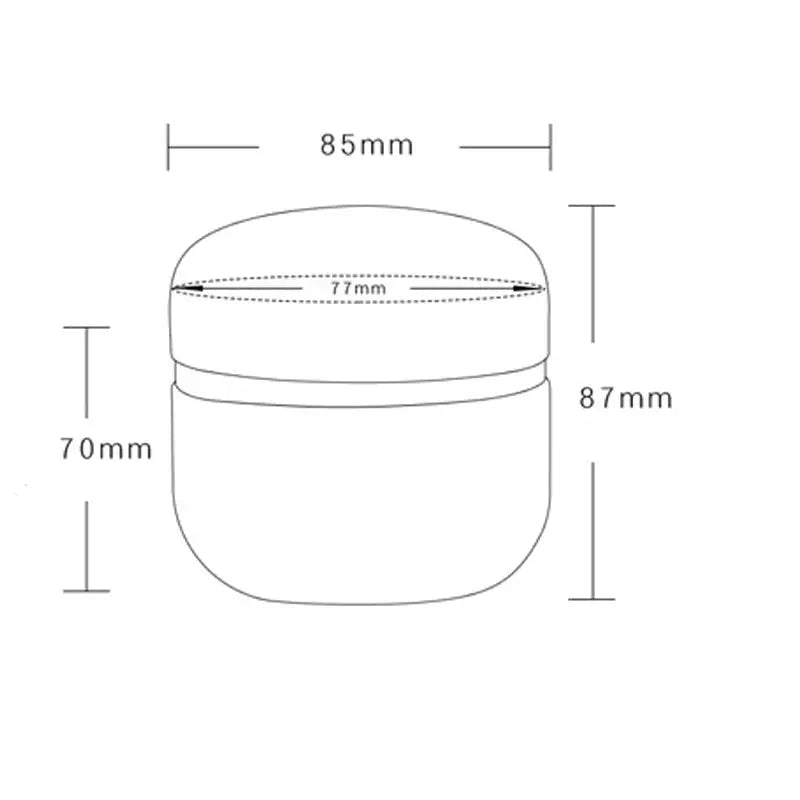1. Embracing the Significance of Personalised Cremation Urns
Losing a loved one is a profound experience, and choosing how to commemorate their life is deeply personal. Many families find comfort in cremation, as it offers a unique means of expressing individuality. Central to this process is the selection of a cremation urn, which serves not only as a resting place for ashes but also as a reflection of the person’s life, passions, and personality.
The trend toward customisation, particularly in personalised cremation urns, highlights the desire for a truly individual memorial.
The Evolution of Personalised Memorials
The National Funeral Directors Association (NFDA) notes a significant shift toward cremation, predicting that by 2035, nearly 80% of Americans will choose this option—up from just 25% in 1990. This trend is driven by factors such as cost-effectiveness, environmental considerations, and the adaptability of memorialisation options. As cremation becomes more prevalent, so does the demand for personalised memorials, with customised urns leading the way.
The Emotional Resonance of Customisation
Personalising an urn to reflect an individual’s character, passions, and interests adds a profound emotional dimension to the memorialisation process. It creates a tangible connection to the departed, helping keep their memory alive in a deeply personal way.
The Diversity of Customisation Options
Customised cremation urns come in various styles, shapes, colours, and materials. Options include engravings, painted scenes, images, and unique elements like handprints or 3D-printed portraits. This diversity ensures families can find an urn that truly encapsulates their loved one’s essence.
In this article, we’ll explore the realm of personalised cremation urns, detailing customisation options and providing guidance on selecting an urn that resonates with your loved one’s unique story.
2. Navigating Aesthetic Choices: Material, Design, and Colour
Understanding the significance of personalised urns allows us to explore the broad spectrum of aesthetic options available. Your choice of material, design, and colour can deeply influence how you remember your loved one, creating a lasting tribute that encapsulates their spirit.
The Significance of Material
Urns can be crafted from a variety of materials, each with unique appeal. Traditional materials like wood and metal offer a classic aesthetic, while contemporary options such as hand-blown glass, ceramic, and eco-friendly materials like bamboo provide modern alternatives.
For example, Jane from Michigan chose a hand-blown glass urn for her artistic son, feeling its vibrancy mirrored his creative spirit. In contrast, David, a veteran from Texas, opted for a sturdy bronze urn to symbolise his military service.
The Impact of Design
Urn designs range from simple and sleek to intricately patterned. Many families choose designs that reflect the deceased’s hobbies or passions, such as nature themes or sports motifs.
The Role of Colour
The colour of the urn can be a powerful personal touch. It might reflect the loved one’s favourite hue or a shade that symbolises their essence. For Sarah in New York, a sky-blue urn for her husband evoked memories of his love for the sky and his favourite colour.
3. The Role of Inscriptions and Engravings: The Power of Words
Adding inscriptions or engravings transforms an urn into a heartfelt vessel of remembrance. A favourite quote, a simple expression of love, or a phrase that encapsulates the individual’s spirit can provide comfort and solace.
Selecting the Perfect Inscription
Choosing the right words to engrave can be an emotional process. Involve family members if possible, and focus on what truly represents your loved one.
Practical Tips for Engravings:
- Keep it concise: Space is limited, so brevity ensures clarity and impact.
- Opt for readable fonts: Simple fonts are easier to read and maintain a timeless appeal.
- Match the material: Lighter materials like marble may require darker engraving for contrast.
4. Incorporating Unique Elements: From Photographs to Thumbprints
Customisation can go beyond words. Adding photographs, thumbprints, or other unique elements can make an urn a deeply personal tribute.
The Power of Imagery
Photo-engraved urns create a visual representation of your loved one. For instance, the Johnson family engraved their grandmother’s urn with an image of her baking cookies, celebrating a cherished memory.
Thumbprints: A Personal Touch
A thumbprint on an urn can feel like a tangible connection to the departed. Families often find comfort in this unique and intimate detail.
5. The Significance of Theme-Based Urns: Honouring a Loved One’s Passion
Theme-based urns reflect hobbies, interests, or vocations, offering a fitting tribute to a loved one’s life. Mary, for example, honoured her husband’s passion for sailing with a sailboat-shaped urn, providing both comfort and a lasting reminder of his love for the sea.
6. The Role of Eco-Friendly Customisations: Honouring Nature Lovers
Eco-friendly urns are a meaningful way to pay tribute to nature enthusiasts. Biodegradable urns and plantable urns, which allow a tree or plant to grow in memory of a loved one, honour their connection to the earth.
7. Making the Decision: Navigating Cost, Quality, and Personalisation
When selecting a cremation urn, consider cost, quality, and personalisation. While cost varies widely, prioritising durable materials and meaningful designs ensures a lasting and heartfelt tribute.
Ultimately, the best urn is one that resonates with you and your family, offering comfort and a tangible connection to your loved one’s memory.
Read Next: Engraving Memories: How to Make Memorial Products Uniquely Yours




















